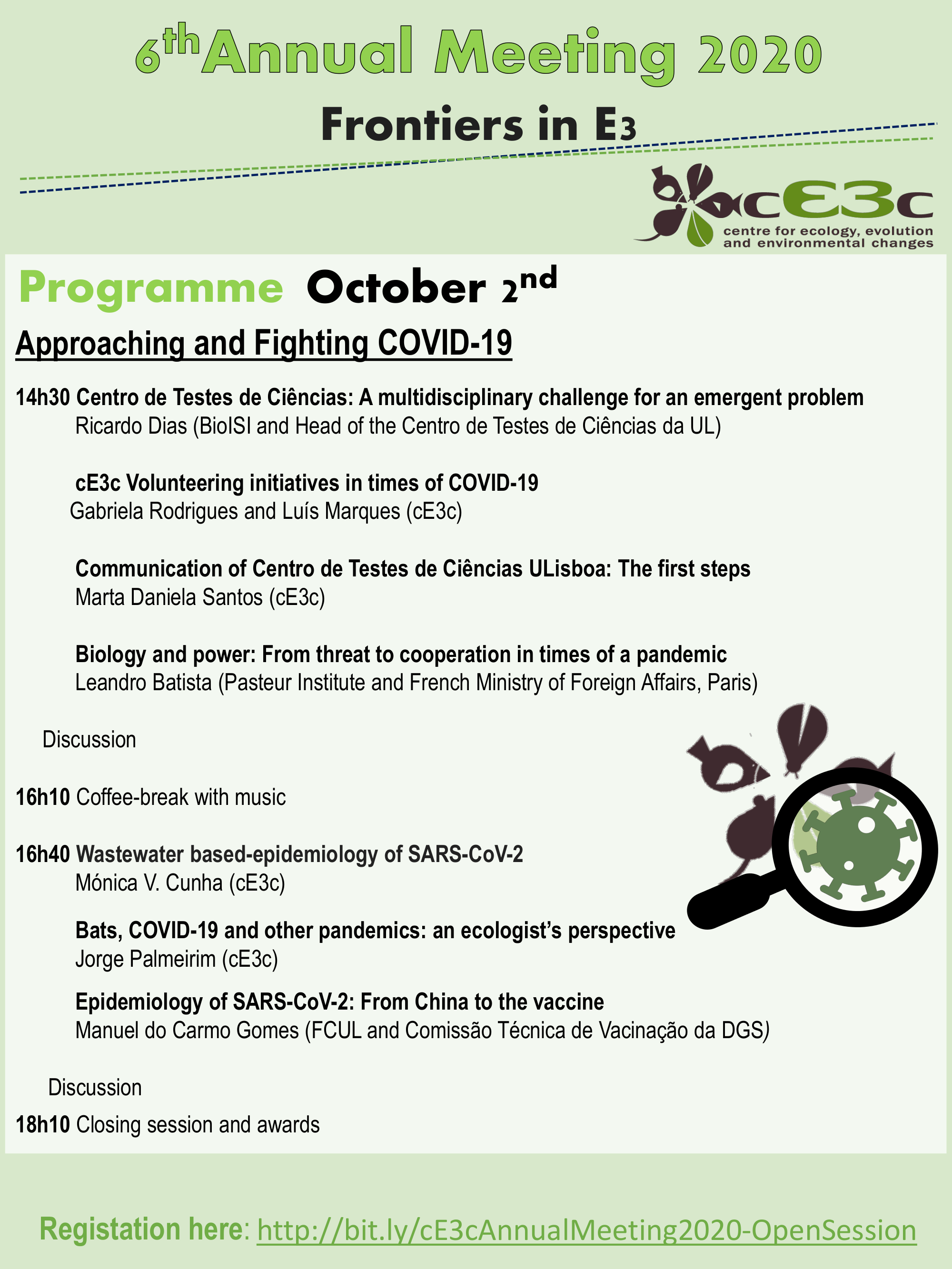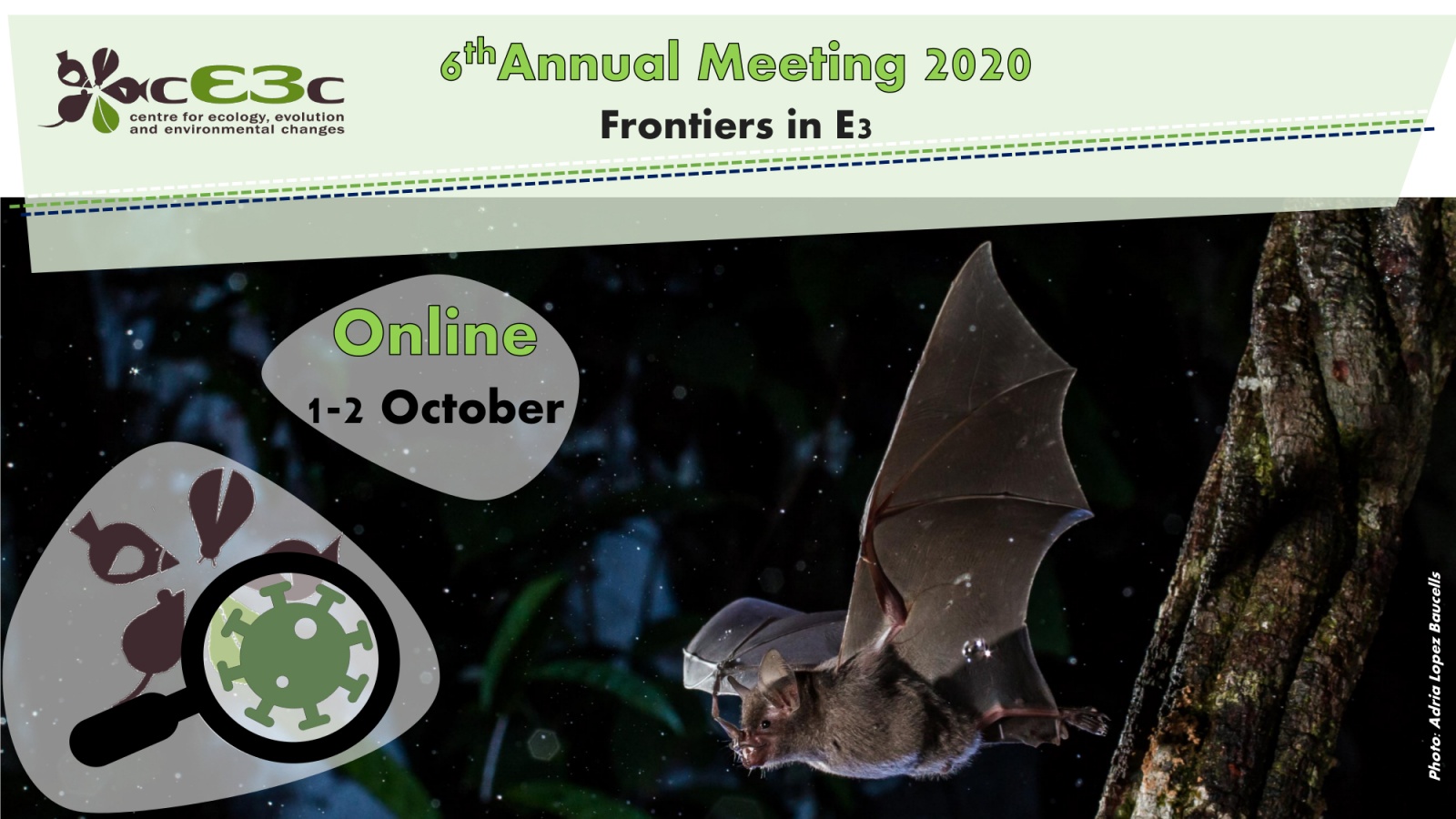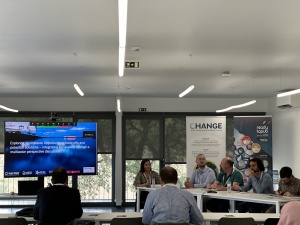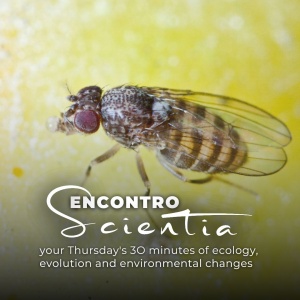23/09/2020. Texto de Marta Daniela Santos.
Em 2020 o Encontro Anual do cE3c realiza-se online, via Zoom, nas tardes de 1 e 2 de outubro (quinta e sexta-feira). A sessão de 2 de outubro será dedicada ao tema atual Approaching and Fighting COVID-19 e é aberta a todos os interessados mediante inscrição prévia AQUI.
Devido ao evoluir da pandemia de COVID-19, em 2020 o Encontro Anual do cE3c realiza-se online, via Zoom. A tarde de 1 de outubro, quinta-feira, será reservada aos investigadores do centro, que entre si vão apresentar e discutir os projetos mais recentes e explorar colaborações.
Tomando como ponto de partida a realidade atual, a tarde de 2 de outubro, sexta-feira, é dedicada ao tema do combate à pandemia de COVID-19, dando destaque a importantes contributos nesta área de investigadores do cE3c da Faculdade de Ciências da Universidade de Lisboa que através da sua investigação e iniciativas voluntárias específicas estão a contribuir para esta área.

Em particular, a 2 de outubro recebemos como oradores convidados Ricardo Dias, investigador do Instituto de Biossistemas e Ciências Integrativas – BioISI e coordenador do Centro de Testes de Ciências ULisboa; Leandro Batista, investigador do Instituto Pasteur e Ministério Francês dos Negócios Estrangeiros (França), e Manuel Carmo Gomes, investigador da Faculdade de Ciências da Universidade de Lisboa e membro da Comissão Técnica de Vacinação da Direção-Geral de Saúde.
Do cE3c, contaremos também com as apresentações de Mónica Cunha, responsável pela coordenação científica do projeto COVIDETECT através de Ciências ULisboa, Jorge Palmeirim, a desenvolver investigação na área dos morcegos, Gabriela Rodrigues e Luís Marques, ativamente envolvidos em iniciativas de voluntariado face ao COVID-19, e Marta Daniela Santos, que colabora na comunicação do Centro de Testes de Ciências ULisboa.
Esta é a sexta edição do Encontro Anual do cE3c, que em anos anteriores já se realizou nos Açores – em São Miguel – e em Lisboa – no Museu Nacional de História Natural e da Ciência (MUHNAC) e na Faculdade de Ciências da Universidade de Lisboa.
O programa para dia 2 de outubro está disponível em baixo, com os resumos de cada apresentação (em atualização). Caso não seja membro do cE3c e pretenda assistir à sessão, por favor inscreva-se AQUI.
Approaching and Fighting COVID-19:
October 2, 14h30-18h30, online via Zoom
14h30:
// Centro de Testes de Ciências: A multidisciplinar challenge for an emergent problem, by Ricardo Dias (BioISI & Head of Centro de Testes de Ciências ULisboa)
The Centro de Testes Ciências ULisboa will be presented. Why and how it was created, its objectives, main challenges and the contributions it provides to The New Tomorrow post-COVID19.
//cE3c Volunteering Initiatives in times of COVID-19, by Gabriela Rodrigues and Luís Marques (cE3c)
From March until May 2020, Gabriela Rodrigues and Luís Marques collaborated in producing and distributing protection equipment (visors) for hospitals and FCUL researchers. These visors were made using the cE3c-purchased 3D printer installed at the FCUL Microscopy Facility, and assembled using resources provided by the Department of Animal Biology, with the aditional collaboration of BioISI. A brief timeline of this initiative is the subject of this presentation.
//Communication of Centro de Testes de Ciências ULisboa: The first steps, by Marta Daniela Santos (cE3c)
The Test Centre of the Faculty of Sciences of the University of Lisbon (Portugal) is a research and development infrastructure currently dedicated entirely to the mitigation of COVID-19 through the screening of the SARS-CoV-2 virus and immunological tests.
Since it started activity, on May 1, 2020, the Faculty undertook diverse communication initiatives to raise awareness about the work developed by the Test Centre both in the Faculty and among society.
In this talk, I will present some of the communication initiatives in which I have been involved as a volunteer, in collaboration with the Communication and Image Area of the Faculty, which represent the first steps in the communication strategy of this Test Centre.
//Biology and power: From threat to cooperation in times of a pandemic, by Leandro Batista (Pasteur Institute & French Ministry of Foreign Affairs, Paris)
Since their inception, Biology and International Politics have tended to be regarded as two very distinct spheres of human society that rarely or never cross their paths. In fact, some early attempts to establish a link between these two fields failed miserably, generating misunderstandings that scientists and policymakers alike would rather prevent. As science, technology and society evolved, however, emerging scientific challenges that would have traditionally concerned only a handful of people (or nobody at all) have gradually become an “everyman’s” problem. A reality that forced governments to renew their interest for science and technology, and increasingly more so for Biology. In times of COVID-19, whose consequences have reached far beyond the healthcare system, this trend seems to have been drastically accelerated. From speculations on the artificial origins of the virus to a global rush for the creation of a vaccine, the importance of Life Sciences in Politics is undeniably greater today. Bearing in mind the significant impact of the coronavirus crisis in global affairs, in this presentation, I will draw on my training and experience both as a scientist and as a diplomat to discuss the place of Biology in Politics as well as the risks or benefits of their intermingling that the current pandemic has brought to light.
Discussion
16h10: Coffee-break with music.
16h40:
// Wastewater based-epidemiology of SARS-CoV-2, by Mónica V. Cunha (cE3c)
Wastewater-based epidemiology (WBE) is an emerging research area with the potential to assess fingerprints of human activities. It has been used as a tool to provide information on the consumption of legal and illegal drugs, as well as antibiotics, on a population level. Analysis of wastewater for polioviruses has also been carried out in the context of the Global Polio Eradication Initiative to complement active surveillance of acute flaccid paralysis cases, enabling early detection of poliovirus circulation and transmission.
SARS-CoV-2 containment has been overtaken by quick viral spread through aerosols and limited resources for testing. The methods for tracking the COVID-19 pandemic primarily rely on clinical testing of symptomatic people but this process may involve several delays that preclude real-time outbreak tracing. Given that infected individuals may shed viral RNA in feces, the quantification of SARS-CoV-2 in wastewater has been proposed as an addition to syndromic surveillance to assess the spread of the virus on a community. This concept has been explored in several countries. In Portugal, COVIDETECT has joined the academia and water utilities around the common aim to implement an early warning tool based on wastewater surveillance for predicting SARS-CoV-2 recrudescence. While the project is ongoing, I will go through the strategic framework, discussing the promises and bottlenecks of WBE to reliably understand the true magnitude of the COVID-19 epidemic.
// Bats, COVID-19 and other pandemics: an ecologist’s perspective, by Jorge Palmeirim (cE3c)
Bats are a highly diverse and ecologically important group with an extremely interesting biology, but lately the focus of the public on these animals has been limited to their role as reservoir of zoonoses and in the COVID pandemic. But what do we really know about this role? And are bats particularly prone to be reservoirs of potential zoonoses?
More pandemics are certain to hit humankind, and it became common place to state that nature destruction is making the situation worse. Is this true? What are the mechanisms that may link this destruction to the transfer of zoonoses from wildlife to humans? Most of these questions are still open, but we will advance and discuss some possible answers, from an ecologist’s perspective.
// Epidemiology of SARS-CoV-2: From China to the vaccine, by Manuel do Carmo Gomes (FCUL and Comissão Técnica de Vacinação da DGS)
SARS-CoV-2 was the third novel coronavirus that appeared in the 21st century with potential to cause a pandemic. The first COVID-19 case was reported December 8th, 2019, in China and, in a matter of 7 weeks, the virus caused a regional epidemic of over 55,000 cases, then spreading around the planet in less than two months. I review the reasons why SARS-CoV-2 has been so successful, namely its transmission routes, incubation period, and R0, and why the associated COVID-19 presents such a threat for the health services. The range of vaccine strategies currently being developed against COVID-19 is presented, as well as their main short-comings. I finish with the concept of herd immunity against COVID-19 through vaccination and with a word of caution for the future.
Discussion
18h10: Closing session and Awards.






